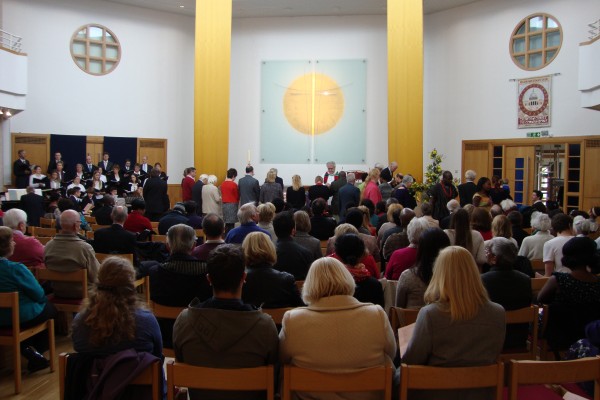Music to End Sunday, 6 June 2021
Hello, everyone.
Over the past fifteen months I have recorded several ‘Orgelbuchlein’ chorale preludes of J.S. Bach.
They are particularly well-suited to our organ at Cornerstone.
We open tonight with the prelude based on ‘Vater unser im Himmelreich’
(‘Our Father who art in heaven’),
one of Luther’s greatest hymns.
The original hymn is in nine stanzas,
each of the first eight based upon one of the verses of the Lord’s Prayer,
the ninth on the ‘Amen’.
In Bach’s four-part texture, the chorale melody is ‘lined out’ in the top voice
while the three lower voices engage in a contrapuntal web of off-beat semiquavers.
Taizé, in the Burgundy region of France,
has become one of the world’s most important sites of Christian pilgrimage,
with a focus on youth.
Before the pandemic,
more than one hundred thousand young people from around the world
made pilgrimages to Taizé each year for prayer,
Bible study, sharing and communal work.
Through the community’s ecumenical outlook
they are encouraged to live in the spirit of kindness,
simplicity and reconciliation.
Taizé demonstrates its inclusiveness in its music.
Songs are sung in many languages,
and include chants and icons from the Eastern Orthodox tradition.
The music emphasises simple phrases, usually lines from the psalms,
repeated and sometimes sung in Canon.
‘Bless the Lord my Soul’ is based on Psalm 72.
Words from Psalm 103:1. Composed by Jacques Berthier et Le Communauté de Taizé in 1984.
The great German symphonist Anton Bruckner
composed no fewer than forty motets during his life,
reflecting his deep Christian faith.
‘Os justi’, one of the finest of the set,
was written towards the end of his life, during his Vienna years.
It was completed between the eighth and ninth Symphonies.
The masterly chordal harmonies of the outer sections
frame a contrapuntal middle section of great individuality.
The motet ends with a unison Alleluja in the Lutheran mode.
Words from Psalm 37:30-31. Gregorian chant used as gradual of the Commune Doctorum, WAB 30 composed by Anton Bruckner in 1879.
We conclude with the iconic Intermezzo from Mascagni’s ‘Cavalleria Rusticana’.
In the opera the music reflects the tranquility and peacefulness
of the village square as the congregation worships inside the church.
May we be filled with a calm and inner peace as we take our rest this night
and prepare for the challenges of the weeks ahead.
Goodnight everyone.
Adrian Boynton


